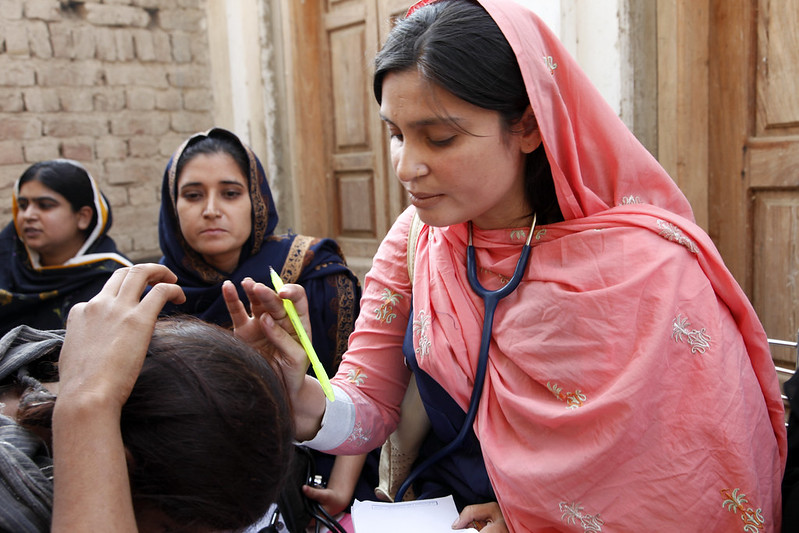Recommended

REPORTS
Despite decades of investment, TB remains a global crisis. Each year, TB kills 1.6 million people—making it the world’s deadliest infectious diseases. Not only is donor funding likely in decline, but our prevention and treatment toolbox is insufficient to meet global goals, and with huge gaps in R&D investment for TB, prospects to tackle the epidemic sustainably look grim.
But almost two years ago, we looked at these challenges and saw an opportunity. Despite the fact that donor funding was declining, middle-income countries (MIC) were rapidly expanding health spending and social health insurance schemes, increasingly informed by health technology assessment (HTA) institutions to prioritize public spending. At the same time, BRICS countries were expressing increased political commitment to tackling the TB epidemic—one of the biggest killers for their citizens. If these high-burden middle-income countries could leverage this political commitment; if they could articulate and pool their demand for better TB treatment; if they could offer advance purchase commitments based on local value; and if they could underwrite those commitments to increase credibility to pharmaceutical innovators—then maybe countries’ own demand could drive pharmaceutical innovation.
With this insight, we set out to develop a solution: what we ultimately called the Market-Driven, Value-Based Advance Commitment (MVAC), a mechanism to create and guarantee a market for better TB treatment, if and when such a treatment becomes available.
The MVAC builds on the Advance Market Commitment (AMC) mechanism previously used in global health for PCV (pneumococcal conjugate vaccine). The MVAC has several important innovations and improvements. Most crucially, the MVAC is driven by MIC demand rather than donor contributions; informed by countries’ ability to pay rather than a single, “cost plus” price; and allows pharmaceutical companies to reap higher revenues from a more effective product.
Our MVAC proposal addresses the specific needs for new TB drugs, but its structure and principles can be extended and applied to address other unmet MIC health needs that lack a sufficient HIC market to justify private-sector R&D investment. Elements of the MVAC can and should be used to help create viable, functional markets for other innovations, including products at later stages in the development pipeline. The long-term vision is to create a system where MVAC-type commitments are no longer needed; over the long run, MICs should evolve their own HTA systems and demonstrate increasingly stable demand for innovative interventions that deliver local value.
Today, we’re pleased to publish the final MVAC “blueprint” outlining its rationale and basic structure. The MVAC stands on four pillars:
- HTA—based on country-specific evidence and ability to pay—to inform countries’ value-based purchase commitments
- Commitment guarantees—underwritten by a development bank—that will help ensure that MICs credibly signal to industry their demand and ability to pay
- Industrial policy alignment
- A governance structure credible to both MIC payers and industry to drive and operationalize the MVAC. This requires it to be authoritative, open, and sufficiently flexible to place MIC governments in the driving seat.
This final MVAC blueprint draws deeply from the collective expertise and experience of our colleagues in the TB, health economics, and global health communities. We decided early on to crowdsource feedback through a consultation draft in the public domain; we subsequently received several thoughtful and challenging responses that shaped and sharpened our thinking. We’ve also actively introduced and tested the idea with stakeholders across civil society, government, international organizations, industry, and academia through an extensive series of consultations.
In this version—the final blueprint—we’ve done our best to incorporate and account for the feedback we’ve heard along the way; we describe the updates in brief in Appendix 6 of the report and discuss some of the thornier issues here. But we’re also the first to acknowledge that we still don’t have all the answers. For the MVAC to succeed, we still need to resolve some thorny questions—some technical, and some political. These details, and many others, would need to be hammered out during the detailed negotiations required to make the MVAC a reality.
We believe the MVAC is an innovative mechanism that can help to kickstart the R&D revolution needed to tackle diseases of the poor whilst also creating the beginnings of a marketplace for innovative products in emerging markets. We are proposing first use of this mechanism for new drugs for TB. Everyone agrees that the cost of inaction on TB is unacceptable; and even though this is the “final” blueprint, let’s maintain the open, constructive dialogue and try to chart a path forward. Let’s use the MVAC to address the TB epidemic by turning rhetoric into reality: transforming the global R&D agenda through country-led, evidence-based institutions for UHC that send the right signals to the private sector about both the type of investment needed and the determination to deliver spending on these new treatments when they appear.
Disclaimer
CGD blog posts reflect the views of the authors, drawing on prior research and experience in their areas of expertise. CGD is a nonpartisan, independent organization and does not take institutional positions.





